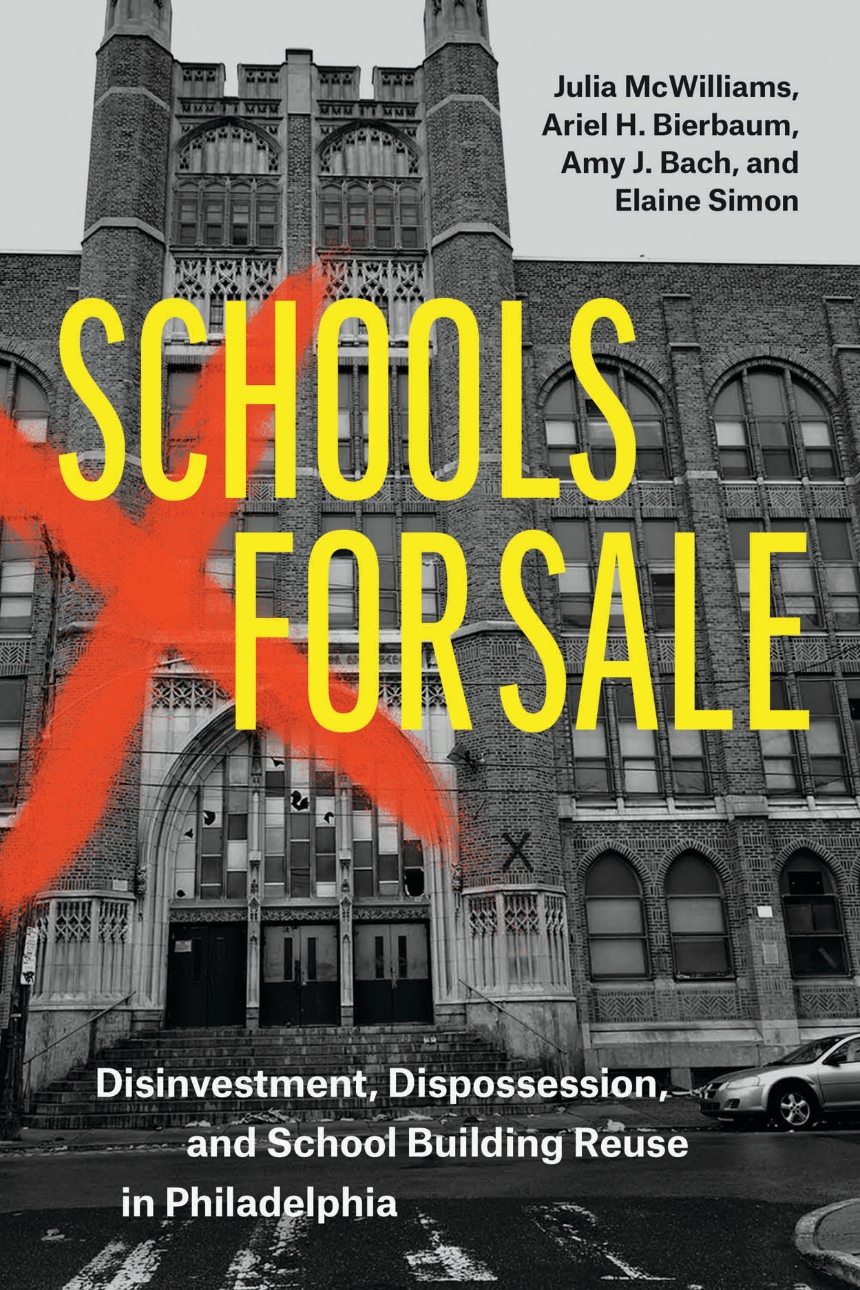Schools for Sale
Disinvestment, Dispossession, and School Building Reuse in Philadelphia
9780226850108
9780226834603
9780226850092
Schools for Sale
Disinvestment, Dispossession, and School Building Reuse in Philadelphia
A surprising look at what happens to the actual school buildings in the wake of school closures.
School districts across the United States have closed thousands of schools since 2000 to cope with chronic underfunding and budget crises, declining enrollment, and poorly maintained buildings. Our knowledge about school closures has focused on battles over closure decision-making and the impacts of closing schools on communities of color in the immediate aftermath of these decisions. But what of the large, sometimes magisterial, formerly public spaces once at the center of community life? How do these now vacant buildings change daily life in the surrounding neighborhood?
In Schools for Sale, Julia McWilliams, Ariel H. Bierbaum, Amy J. Bach, and Elaine Simon examine how school closures change the spatial and social arrangements of neighborhoods. Following a series of school closures in Philadelphia, the authors draw from research in urban studies, education, planning, and geography to explain how race, place, and capital merge to influence the trajectory of closed schools in Black and Brown communities and their surrounding neighborhoods. Some closed schools are repurposed as charter schools, upending the role those buildings have historically played in bringing communities together. Other buildings are sold for commercial development, caught up in cycles of gentrification even as developers foster programs to support community members. Others are left vacant or are demolished in the heart of their neighborhoods, decisions that reflect not only disinvestment in Black communities but the sobering reality of environmental racism.
Drawing needed attention to one of the significant consequences of school closures, Schools for Sale imparts a deeper understanding of the connections between place, race, and education amid broader urban transformations, prompting us to consider how school districts can work toward a new vision for public education and community development.
School districts across the United States have closed thousands of schools since 2000 to cope with chronic underfunding and budget crises, declining enrollment, and poorly maintained buildings. Our knowledge about school closures has focused on battles over closure decision-making and the impacts of closing schools on communities of color in the immediate aftermath of these decisions. But what of the large, sometimes magisterial, formerly public spaces once at the center of community life? How do these now vacant buildings change daily life in the surrounding neighborhood?
In Schools for Sale, Julia McWilliams, Ariel H. Bierbaum, Amy J. Bach, and Elaine Simon examine how school closures change the spatial and social arrangements of neighborhoods. Following a series of school closures in Philadelphia, the authors draw from research in urban studies, education, planning, and geography to explain how race, place, and capital merge to influence the trajectory of closed schools in Black and Brown communities and their surrounding neighborhoods. Some closed schools are repurposed as charter schools, upending the role those buildings have historically played in bringing communities together. Other buildings are sold for commercial development, caught up in cycles of gentrification even as developers foster programs to support community members. Others are left vacant or are demolished in the heart of their neighborhoods, decisions that reflect not only disinvestment in Black communities but the sobering reality of environmental racism.
Drawing needed attention to one of the significant consequences of school closures, Schools for Sale imparts a deeper understanding of the connections between place, race, and education amid broader urban transformations, prompting us to consider how school districts can work toward a new vision for public education and community development.
264 pages | 50 halftones, 2 tables | 6 x 9
Education: Education--Economics, Law, Politics, Pre-School, Elementary and Secondary Education
Geography: Urban Geography
History: Urban History
Table of Contents
Chapter 1. Race, Place, and Capital: Understanding School Building Reuse
Chapter 2. A Brief History of Philadelphia’s Neighborhood and School Change
Chapter 3. Revisioning a School to Anchor Urban Development in North Philly: Roberts Vaux High School to Vaux Big Picture High School
Photographic Essay 1. Slow Violence on Black Geographies: Thomas FitzSimons High School’s Continued Vacancy
Chapter 4. Charter Reconstitution in West Philly: The Transition of Anna Howard Shaw Junior High to Mastery Hardy Williams Charter School
Photographic Essay 2. The Slow Violence of Urban Renewal, Environmental Racism, and Public School Closures: Eastwick Neighborhood and George Wharton Pepper Middle School
Chapter 5. Multidimensional Displacements: From Edward W. Bok Technical High School to the Bok Building
Photographic Essay 3. A Twice-Cleared Community: The Black Bottom, University City High School, and Anchor Institutions’ Role in the Erasure of Black Space
Chapter 6. Charting Reparative Futures for School Building Reuse
Acknowledgments
Notes
Bibliography
Index
Chapter 2. A Brief History of Philadelphia’s Neighborhood and School Change
Chapter 3. Revisioning a School to Anchor Urban Development in North Philly: Roberts Vaux High School to Vaux Big Picture High School
Photographic Essay 1. Slow Violence on Black Geographies: Thomas FitzSimons High School’s Continued Vacancy
Chapter 4. Charter Reconstitution in West Philly: The Transition of Anna Howard Shaw Junior High to Mastery Hardy Williams Charter School
Photographic Essay 2. The Slow Violence of Urban Renewal, Environmental Racism, and Public School Closures: Eastwick Neighborhood and George Wharton Pepper Middle School
Chapter 5. Multidimensional Displacements: From Edward W. Bok Technical High School to the Bok Building
Photographic Essay 3. A Twice-Cleared Community: The Black Bottom, University City High School, and Anchor Institutions’ Role in the Erasure of Black Space
Chapter 6. Charting Reparative Futures for School Building Reuse
Acknowledgments
Notes
Bibliography
Index
